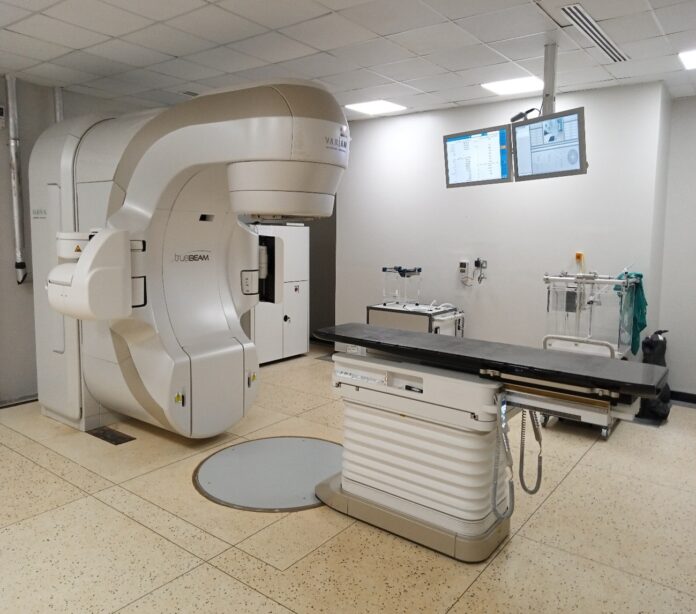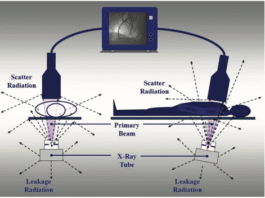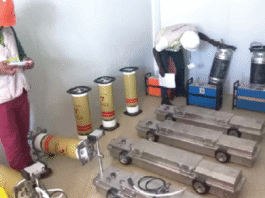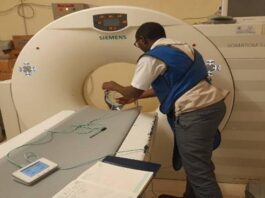Radiotherapy is a critical component for the curative and palliative treatment of cancer. It is considered to be a necessary component of treatment for over 50 percent of all cancer patients…
Understanding Radiotherapy
Radiotherapy is a cancer treatment modality that uses high doses of ionizing radiation to kill cancer cells and shrink tumors. This is done by delivering high-energy particles or waves, such as X-rays, gamma rays, electron beams or protons directly to a tumor, or intended target to destroy or damage the cancer cells using specialized equipment like Linear accelerators.
Radiotherapy is a critical component for the curative and palliative treatment of cancer. It is considered to be a necessary component of treatment for over 50 % of all cancer patients. The decision to use radiotherapy for patient treatment is determined by a physician and this depends on the type and stage of the cancer, the size and location of the tumor, and the person’s general health. A team of qualified experts with the appropriate knowledge, skills and experience in radiation oncology, medical physics and radiation therapy technology is involved during planning and delivery of the treatment.
In Uganda, radiotherapy services are offered at the Uganda Cancer Institute (UCI), located on Mulago Hill in Kampala. The government plans to expand radiotherapy services across the country, with establishment of regional cancer centers in Gulu, Arua, Mbarara and Mbale regional referral hospitals. The radiotherapy practice in Uganda is regulated by the Atomic Energy Council (AEC) to ensure the safety of the patients, workers, and the members of the public from the adverse effects that may arise from use of radiation. AEC provides an adequate regulatory framework to guarantee the safe use of radiation sources in radiotherapy for the benefit of the patients, while ensuring radiation protection and safety of the workers.
Status of cancer incidences in Uganda
According to the Uganda Cancer Institute (UCI, 2024), there are 34,008 new cases of cancer in Uganda per year. The UCI receives only 20% of these cases (6,000 to 7000) of which 600(10%) are children). The International Agency for Research on Cancer Global cancer observatory (Globocan 2022) estimates that in Uganda, breast and gynecological cancers are responsible for over 33.8 % of all female cases, while Kaposi sarcoma and prostate cancer account for nearly 34 per cent of male occurrences. These types of cancers can effectively be treated with radiotherapy. The number of annual cancer-related deaths in Uganda exceeds 24,600.
Radiotherapy treatment may be recommended in cancer management for several purposes including: enhancing the effectiveness of a surgery, reducing or curing early stage cancer, stopping cancer from spreading to another part of the body, treating cancer that has returned and relieving symptoms of advanced cancer.
Achievements and success stories in radiotherapy
The Uganda Cancer Institute has invested in state-of-the-art treatment equipment which has played a pivotal role in elevating the standard of cancer care. These advanced technologies significantly enhance the accuracy of diagnoses, the precision of treatments, and ultimately improve patient outcomes. The Institute currently operates 03 linear accelerators (LINACs) for external beam radiotherapy, 02 high dose brachytherapy after loader systems for internal beam radiotherapy, treatment planning systems, and a CT simulator. The introduction of LINACs at UCI marks a significant advancement in radiotherapy as they are highly effective at delivering high-precision radiation therapy to cancer patients, particularly those with breast, prostate, and head and neck cancers. These machines are recognized globally as the gold standard in radiation therapy, ensuring optimal treatment results while minimizing damage to healthy tissues. As the Institutes continues to rapidly adopt advanced radiotherapy technology, establishing partnerships provides significant advantages to enable proper cancer management in Uganda. Collaboration with international organizations including the International Atomic Energy Agency (IAEA) has enabled the Institute to build the required infrastructure, training healthcare professionals and hence improvement of cancer services. The ongoing construction of modern radiotherapy bunkers and extension of radiotherapy services across the regional cancer centres in Gulu, Arua, Mbarara and Mbale Regional referral hospitals represents UCI’s commitment to future-proofing of its services. The planned facility will house state-of-the-art linear accelerators and brachytherapy equipment, positioning Uganda at the forefront of cancer treatment technology in Sub-Saharan Africa. Through the IAEA Rays of Hope Initiative that focuses on providing support to member states in establishing or improving their cancer treatment infrastructure, including radiotherapy, medical imaging, and nuclear medicine, Uganda has obtained support, including comprehensive assessments, development of national cancer control plan, procurement of equipment, and capacity building of staff.
Why Regulation is Critical
Radiotherapy equipment such as Co-60 units, linear accelerators and HDR brachytherapy systems emit ionizing radiation. Improper use or malfunction of the equipment may lead to radiation injuries, which depending on the radiation dose, has the potential for short-term and long-term effects. Short-term effects may occur with exposure to high doses over a short period, while long-term effects can arise from exposure to smaller doses over an extended time. The most common early side effects, such as nausea and fatigue, typically do not last long as they may begin during or shortly after treatment and usually resolve within a few weeks. In contrast, late side effects, such as secondary cancers may take years to manifest.
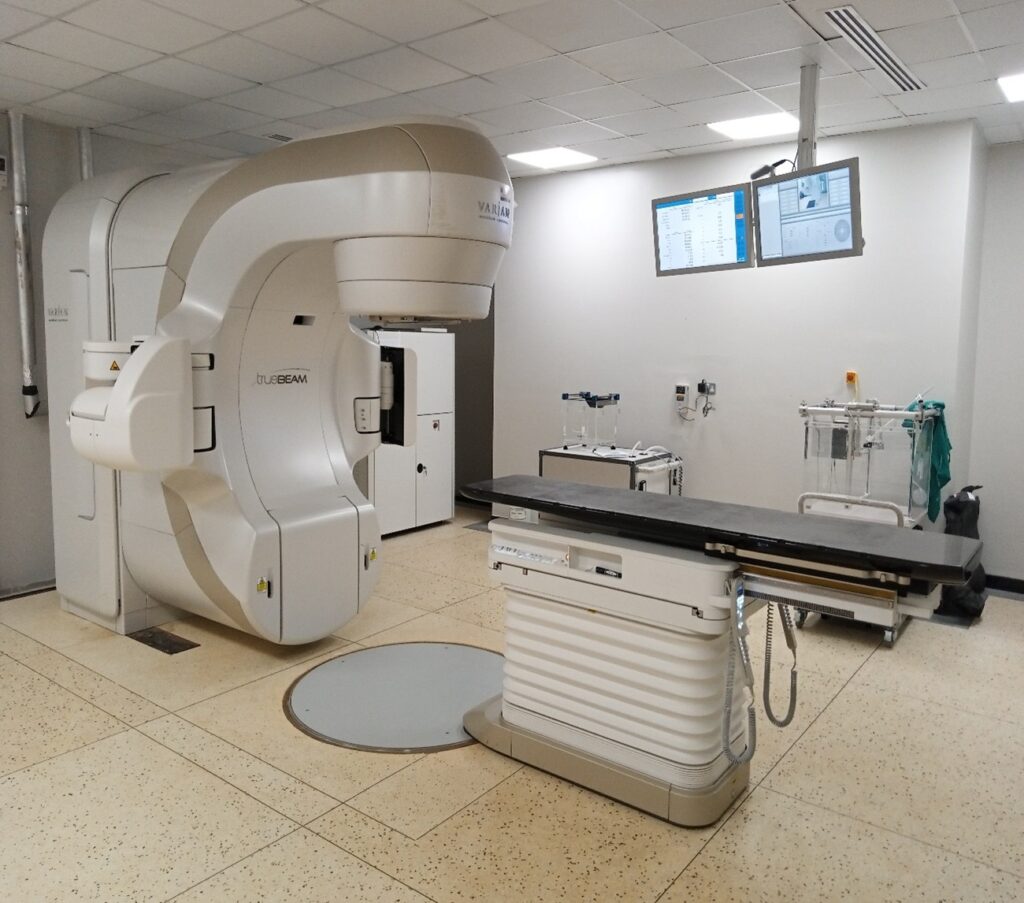
While radiotherapy is primarily a treatment for cancer, improper application can paradoxically lead to the development of cancer and underscores the critical need for regulation of the radiotherapy practice.
Regulation of radiotherapy practice in Uganda
Atomic Energy Council has developed measures to guide facilities on the required infrastructure, resources, including the roles and responsibilities of the different stakeholders involved in radiotherapy practices. The following regulatory activities are performed by AEC to regulate the practice.
a. Development of regulations and safety guides
AEC developed the Atomic Energy Regulations, 2012, which outline the requirements that facilities with radiation sources must follow as part of their quality management systems. Additionally, a stand-alone regulation focused specifically on radiation safety in radiotherapy practice is currently under development.
To facilitate compliance, AEC has issued guidelines that provide further clarification on the regulations including a guidance document to assist facilities in establishing new radiotherapy services or improving existing ones. This guide encompasses all essential elements, including infrastructure needs, professional personnel requirements, specific equipment, and training needs. AEC has also created guidelines for conducting radiation survey measurements in radiotherapy facilities, along with a guide on safe operation of radiotherapy practice.
b. Review of designs and layout of radiotherapy facilities
Before any construction work begins, AEC reviews the designs and layouts of proposed radiotherapy facilities to ensure that they meet national and international standards. This includes using appropriate materials, ensuring adequate bunker (room) spacing, and implementing well shielded walls to minimize radiation exposure to the members of the public and the workers.
c. Conduct of compliance inspections for radiation safety and security
AEC conducts periodic inspections of radiotherapy equipment and radioactive sources in facilities to verify compliance with the Atomic Energy Regulation, 2012, and the licensing conditions. These inspections focus on ensuring patient protection during treatment, monitoring workers’ radiation exposure, confirming that radiation generating equipment operate within acceptable criteria for accurate dose delivery, and securing radioactive sources against malicious intent. Additionally, inspections are conducted prior to the issuance or renewal of licenses to verify compliance with radiation safety standards. Facilities are inspected before an authorization is granted for the construction, possession, and use of radiation sources for patient treatment, as well as during the decommissioning of facilities or radiation sources. Routine inspections are conducted bi-annually to ensure that established procedures are effectively implemented.
d. Licensing of the radiotherapy equipment
Upon submission of an application by a facility intending to undertake radiotherapy, AEC reviews and assesses the application submitted and an appropriate authorization is issued to a facility after attaining the minimum radiation safety and security requirements. These authorizations include permits to import radiation sources, transport radioactive source(s) and license to possess and use radiation sources used in radiotherapy.
Preauthorization inspections are conducted to verify the accuracy of the information provided in the application forms before an authorization is issued, including the submitted designs and layout of the facility, quality assurance program, safety assessment, emergency plan, local rules and treatment protocols. Through these inspections, AEC verifies the competence of the personnel who prescribe and plan the radiotherapy treatment and those who operate the radiotherapy equipment.
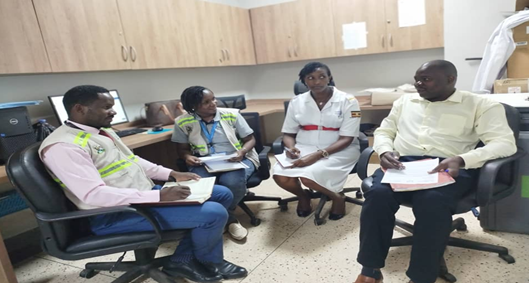
e. Occupational monitoring of the radiation workers
Radiation workers in radiotherapy are exposed to radiation during their duties, necessitating careful occupational radiation exposure monitoring to ensure their safety and prevent adverse effects. AEC oversees the radiation exposure of radiation workers and provides timely results to assess their safety levels.
To facilitate this monitoring, workers wear special chips that measure radiation exposure. Specialized equipment is used to read these chips and provide radiation dose readings, quantifying the amount of radiation received over a specified period, typically three (03) months. This system enables AEC to determine appropriate actions based on the levels of radiation exposure, ensuring the ongoing safety of the radiation workers.
Conclusion
New technological advances in radiation therapy have made life better for cancer patients in recent years by making treatments quicker, more accurate and effective. The Ministry of Health through the Uganda Cancer Institute is planning a decentralized approach to extend cancer related services to rural areas by putting in place regional cancer centers in Uganda. Atomic Energy Council appreciates operators and encourages them to be vigilant in the management of radiotherapy facilities, conduct public awareness about radiation safety. Facilities are encouraged to meet the required regulatory requirements to ensure radiation protection, safety and nuclear security. There is need to continuously advocate for increased investment in radiotherapy infrastructure, training of personnel in the radiotherapy area for both operators and the regulator.

